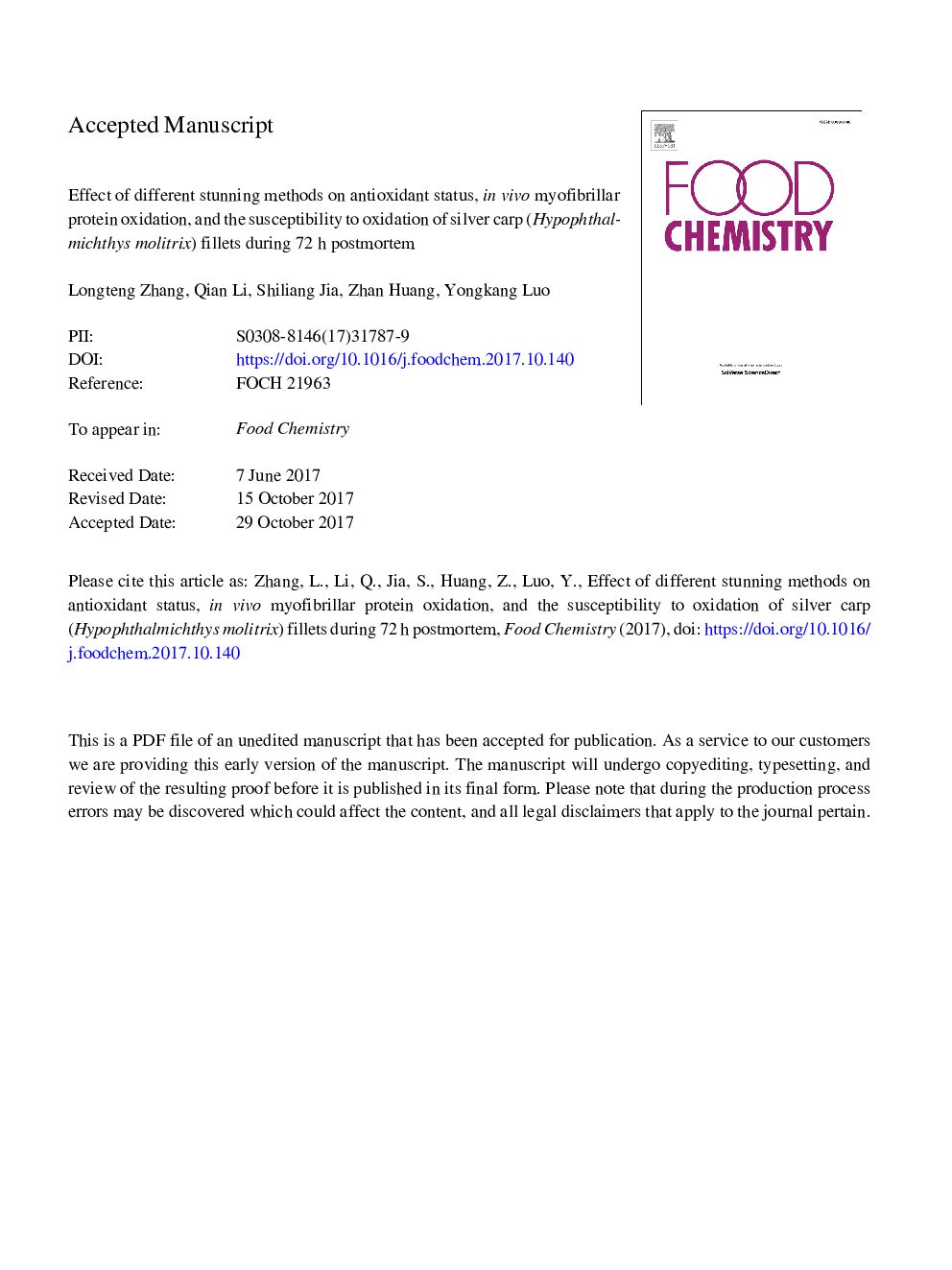| کد مقاله | کد نشریه | سال انتشار | مقاله انگلیسی | نسخه تمام متن |
|---|---|---|---|---|
| 7586140 | 1492046 | 2018 | 42 صفحه PDF | دانلود رایگان |
عنوان انگلیسی مقاله ISI
Effect of different stunning methods on antioxidant status, in vivo myofibrillar protein oxidation, and the susceptibility to oxidation of silver carp (Hypophthalmichthys molitrix) fillets during 72â¯h postmortem
دانلود مقاله + سفارش ترجمه
دانلود مقاله ISI انگلیسی
رایگان برای ایرانیان
کلمات کلیدی
Ferric chloride (PubChem CID: 24380)Ascorbic acid (PubChem CID: 54670067) - اسید اسکوربیک (PubChem CID: 54670067)Lactic acid (PubChem CID: 612) - اسید لاکتیک (PubChem CID: 612)Protein oxidation - اکسیداسیون پروتئینAntioxidant status - وضعیت آنتیاکسیدانیHydrogen Peroxide (PubChem CID: 784) - پراکسید هیدروژن (PubChem CID: 784)Silver carp - کپور نقره ای
موضوعات مرتبط
مهندسی و علوم پایه
شیمی
شیمی آنالیزی یا شیمی تجزیه
پیش نمایش صفحه اول مقاله

چکیده انگلیسی
This study aimed to evaluate the effects of different stunning methods (percussion, T1; immersion in ice/water slurry, T2; gill cut, T3) on antioxidant status, in vivo myofibrillar protein (MP) oxidation, and the susceptibility to postmortem oxidation (induced by hydroxyl radical oxidizing system) of silver carp (Hypophthalmichthys molitrix) fillets. Stress conditions, antioxidant enzyme activities, and protein oxidation parameters were analyzed during 72â¯h postmortem. The results indicated that the strongest stress conditions in the T3 group led to impaired glutathione peroxidase (GPx) and total superoxide dismutase (T-SOD) activity, and significantly (Pâ¯<â¯.05) higher carbonyl concentrations, thereby promoted in vivo MP oxidation of fillets. The T3 group also showed severe losses in myosin heavy chain (MHC) intensities and sulfhydryl groups at higher H2O2 concentrations. Overall, fillets from the T3 group were more susceptible to oxidative damage, and the T1 and T2 groups maintained better quality in terms of lower MP oxidation rates.
ناشر
Database: Elsevier - ScienceDirect (ساینس دایرکت)
Journal: Food Chemistry - Volume 246, 25 April 2018, Pages 121-128
Journal: Food Chemistry - Volume 246, 25 April 2018, Pages 121-128
نویسندگان
Longteng Zhang, Qian Li, Shiliang Jia, Zhan Huang, Yongkang Luo,